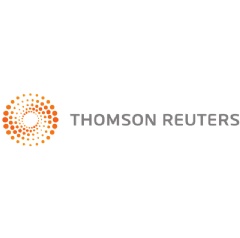Australian Law Firms Facing Major Crossroads – “2017 Australia: State of the Legal Market” Report by Thomson Reuters Peer Monitor and Melbourne Law School
Market returns to positive but minimal growth; technology challenges loom
Australian law firms stand at a critical “fork in the road” where they face key – and risky – decisions that will determine their paths moving forward.
A new report issued by Thomson Reuters Peer Monitor and Melbourne Law School, “2017 Australia: State of the Legal Market,” says that despite improvements in the large law firm market, firms must make “big strategic decisions” on how to deploy technology to ensure their best opportunity for future growth.
The report is based on financial data drawn from the Australian offices of 18 major law firms, with analysis undertaken by Thomson Reuters Peer Monitor.
The market for large law firm services may have turned a corner in FY2017. After four consecutive years of declining demand, the market returned to positive growth, albeit a mere 0.1%. Overall, the market showed growth in four key metrics: demand, worked rates, fees worked and utilisation – although none was greater than one percent. However, after contracting for most of the last decade, even this modest success may mark an important inflection point.
Corporate general and M&A work, along with real estate practices, showed significant growth, while banking and finance had significant contraction in demand.
The very largest firms, referred to as the “Big 8,” generally outperformed their counterparts, with revenue growth averaging 1.6%, while other large firms declined 1.3%. The Big 8 have widened the gap in utilisation, with the average QFE working 310 hours, or 20 more than their counterparts at other large firms. The picture with regard to rates is more mixed. Big 8 firms have widened the gap on worked rates (agreed upon rates with clients), charging an average of $489 per hour, or $66 more than other large firms. However, with billed rates (rates actually billed to clients), the gap has narrowed somewhat, with Big 8 charging an average of $423, or $48 more than other large firms.
The average firm decreased their overall spend on direct and indirect expenses in FY2017. Big 8 firms are still growing expenses, only at a slower rate. However, other large firms are contracting both their direct and indirect expense spend. Technology and outside services represented some of the largest increases in spending. The recent “2017 State of the U.S. Legal Market Mid-Year Report” found that higher-performing firms in the U.S. tended to have higher levels of spending on technology, marketing and business development.
Despite the improving market conditions, the report cautions that firms face increasing pressures from a combination of client demands, growing judicial and regulatory requirements, and evolving preferences of firm employees. Technologies such as cognitive computing, mobile, client connectivity, software-as-a-service and the cloud, may help firms cope with these pressures and continue to grow profitability.
However, in adopting those technologies, law firms must decide whether to pursue a strategy of “Exploit” to leverage current strengths and capabilities to make their current core business as good as it can be, or “Explore” to leverage new exploratory and experimentation efforts that will hopefully bear fruit in the future, or adopt a hybrid approach.
“In an increasingly technology-enabled world with hypercompetitive markets, firms can no longer afford to stand still but instead need to make active choices,” said Joel Barolsky, lead author of the report, and Senior Fellow at Melbourne Law School and principal at Barolsky Advisors. “Firms must decide whether to be pioneers investing in experimenting with new technologies, or take a more cautious approach and wait to see which technologies take hold and what clients prefer. Both paths come with their own risks and rewards. My personal view is that firms need to adopt both Exploit and Explore strategies to determine the best path forward.”
“The 2017 Peer Monitor data leaves little doubt that technology is rapidly changing both the business and practice of law,” said Michael Abbott, vice president, Client Management and Thought Leadership, Thomson Reuters. ”But fully exploiting technological advances may require major changes to firm governance, as well as internal structures involving finance, marketing, pricing, operations and HR. Firm leadership must stand ready to confront these challenges and turn them into opportunities for growth.”
To get a copy of the “2017 Australia: State of the Legal Market,” go to: http://insight.thomsonreuters.com.au/resources/resource/state-of-the-australian-legal-market-2017/.
Thomson Reuters
Thomson Reuters is the world’s leading source of intelligent information for businesses and professionals. We combine industry expertise with innovative technology to deliver critical information to leading decision makers in the financial and risk, legal, tax and accounting, intellectual property and science and media markets, powered by the world’s most trusted news organization. For more information, go to www.thomsonreuters.com.
( Press Release Image: https://photos.webwire.com/prmedia/7/214978/214978-1.png )
WebWireID214978
This news content was configured by WebWire editorial staff. Linking is permitted.
News Release Distribution and Press Release Distribution Services Provided by WebWire.
